
 Bursa
Bursa
Removed from Unnamed collection
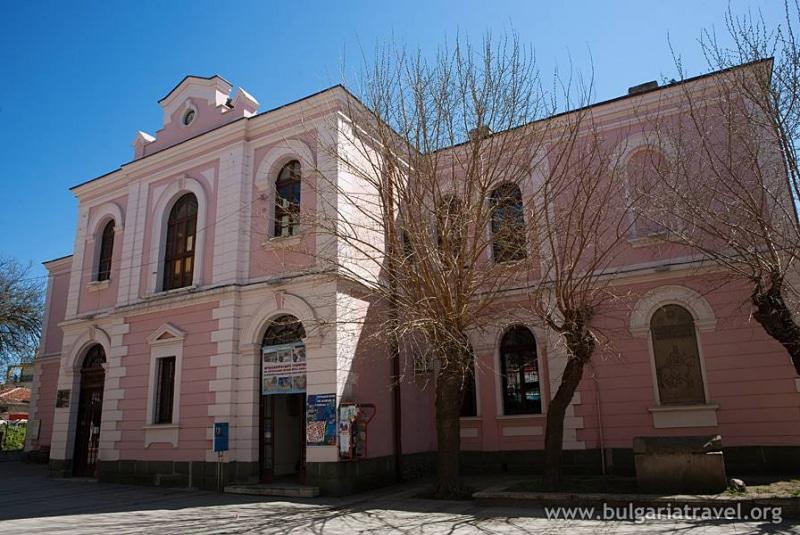
Removed from Unnamed collection
Archeological Museum 
The Archaeological Museum, nestled in a charming building that once served as a girls' school, dates back to 1894. This elegant structure was crafted by the talented Swiss architect Herman Maier, who also lent his design expertise to several banks in Sofia, Plovdiv, and Russe. As you wander through the museum, you can't help but appreciate its historical aura, which beautifully complements the treasures housed within. The museum is a treasure trove of artifacts that whisper stories from the past, enticing visitors to explore the rich history of the region. Don't miss the captivating exhibits that showcase everything from ancient pottery to intricate jewelry, each piece offering a glimpse into the lives of those who walked these lands centuries ago.
Map
Explore more places related to this search:
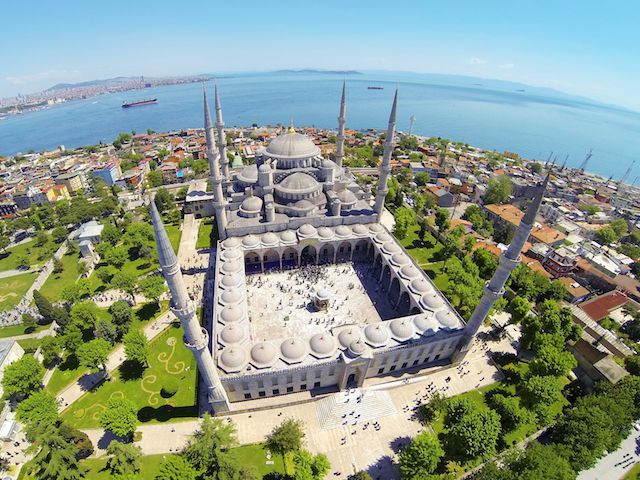
Removed from Unnamed collection
Blue Mosque 
The Blue Mosque (Called Sultanahmet Camii in Turkish) is an historical mosque in Istanbul. The mosque is known as the Blue Mosque because of blue tiles surrounding the walls of interior design.Mosque was built between 1609 and 1616 years, during the rule of Ahmed I. just like many other mosques, it also comprises a tomb of the founder, a madrasa and a hospice.Besides still used as a mosque, the Sultan Ahmed Mosque has also become a popular tourist attraction in Istanbul.
Besides being tourist attraction, it's also a active mosque, so it's closed to non worshippers for a half hour or so during the five daily prayers.
Best way to see great architecture of the Blue Mosque is to approach it from the Hippodrome. (West side of the mosque) As if you are non-Muslim visitor, you also have to use same direction to enter the Mosque. http://www.bluemosque.co/
Map
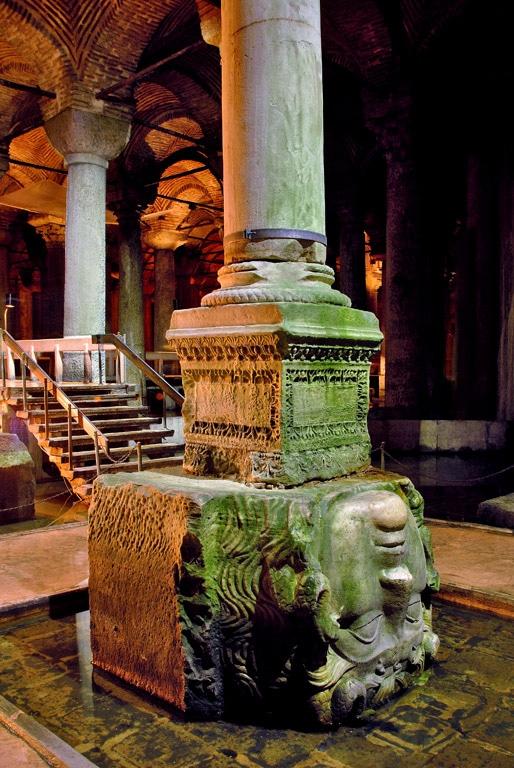
Removed from Unnamed collection
Basilica Cistern 
One of the magnificent ancient buildings of İstanbul is the Basilica Cistern located in the southwest of Hagia Sofia. Constructed for Justinianus I, the Byzantium Emperor (527-565), this big underground water reservoir is called as “Yerebatan Cistern” among the public because of the underground marble columns. As there used to be a basilica in the place of the cistern, it is also called Basilica Cistern.
The cistern is a giant structure covering a rectangular area of 140 meters in length and 70 meters in width. Covering a total area of 9,800 m2, this cistern has a storage capacity of approximately 100,000 tons of water. There are 336 columns, each 9 meters high, inside this cistern, which is descended by a 52-step stone staircase. These columns, erected at intervals of 4.80 meters, form 12 rows of 28 columns each. Most of the columns, which are understood to have been collected from older structures, were carved from various types of marble and consisted of one piece and two pieces. The walls of the cistern, 4.80 meters thick, made of bricks and the brick-paved floor, were plastered with a thick layer of Horasan mortar and made water impermeable. http://yerebatan.com/
Map
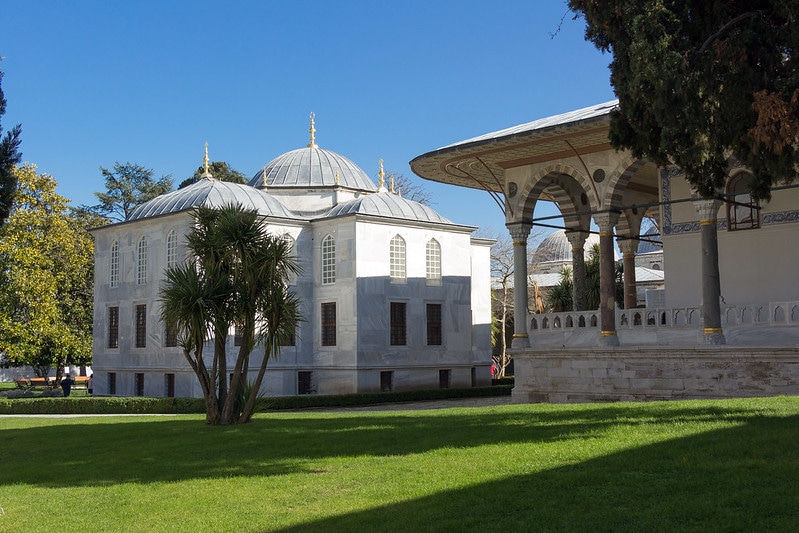
Removed from Unnamed collection
Topkapi Palace Museum 
It is located on the promontory of the historical peninsula in İstanbul which overlooks both the Marmara Sea and the İstanbul strait. The walls enclosing the palace grounds, the main gate on the land side and the first buildings were constructed during the time of Fatih Sultan Mehmet (the Conqueror) (1451 - 81). The palace has taken its present layout with the addition of new structures in the later centuries. Topkapı Palace was the official residence of the Ottoman Sultans, starting with Fatih Sultan Mehmet until 1856, when Abdülmecid moved to the Dolmabahçe Palace, functioned as the administrative centre of the state. The Enderun section also gained importance as a school. Topkapı Palace was converted to a museum in 1924. Parts of the Palace such as the Harem, Baghdad Pavilion, Revan Pavilion, Sofa Pavilion, and the Audience Chamber distinguish themselves with their architectural assets, while in other sections artefacts are displayed which reflect the palace life. The museum also has collections from various donations and a library.https://muze.gen.tr/muze-detay/topkapi
Map
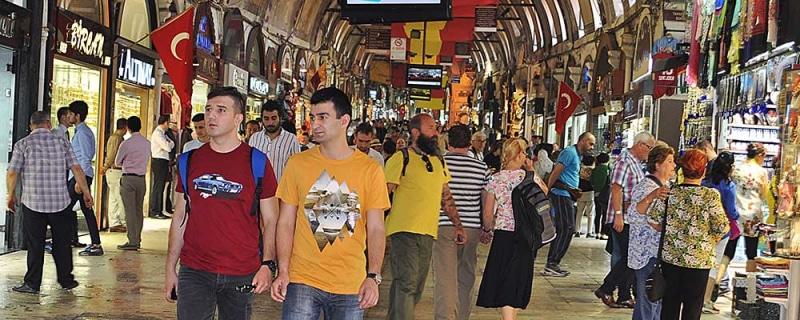
Removed from Unnamed collection
Grand Bazaar 
With its 66 streets and over 4000 shops, the Grand Bazaar is the biggest covered bazaar in the world. The Grand Bazaar (Kapalı Çarşı in Turkish) is an overwhelming experience for many. Sellers hawk their wares at the top of the voice, everyone has their own technique to entice you in, the colors, lights and sounds create an exotic and unique atmosphere. http://kapalicarsi.com.tr/tr/
Map
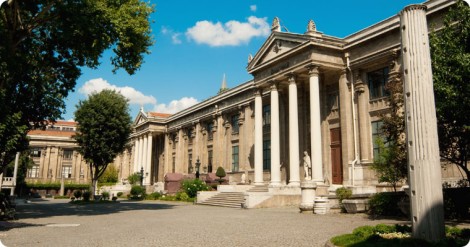
Removed from Unnamed collection
Istanbul Archaeology Museum 
Nestled in the heart of Istanbul, the Archaeological Museums are a treasure trove of history and a captivating venue for outdoor events. This fascinating complex consists of three main sections: the Istanbul Archaeological Museum, the Ancient Orient Museum, and the Tiled Kiosk Museum. With an astounding collection of over one million artifacts, this was Turkey's very first museum. Its exhibits showcase the rich and diverse cultures that once thrived across the vast imperial territories. Wandering through the museum's halls feels like stepping back in time. From ancient sculptures to intricate mosaics, each piece tells its own story. The Tiled Kiosk Museum, with its stunning Seljuk-era tiles, offers a glimpse into the artistry of the past. Meanwhile, the Ancient Orient Museum is a haven for those fascinated by the early civilizations of Mesopotamia and Anatolia. One of the most intriguing items on display is the Alexander Sarcophagus, renowned for its detailed carvings that depict scenes from the life of Alexander the Great. This masterpiece alone makes a visit worthwhile. Whether you're a history buff or just someone who appreciates beauty, the Istanbul Archaeological Museums promise an unforgettable experience.
Map

Removed from Unnamed collection
Spice Bazaar 
No visit to Istanbul is complete without stopping by the atmospheric Spice Bazaar. While the Grand Bazaar may be the largest and most famous of Istanbul's covered bazaars, this spice market wins the prize for being the most colorful, fragrant, and often the most fun – as visitors can taste the goods on offer. https://istanbultourstudio.com/things-to-do/spice-bazaar
Map
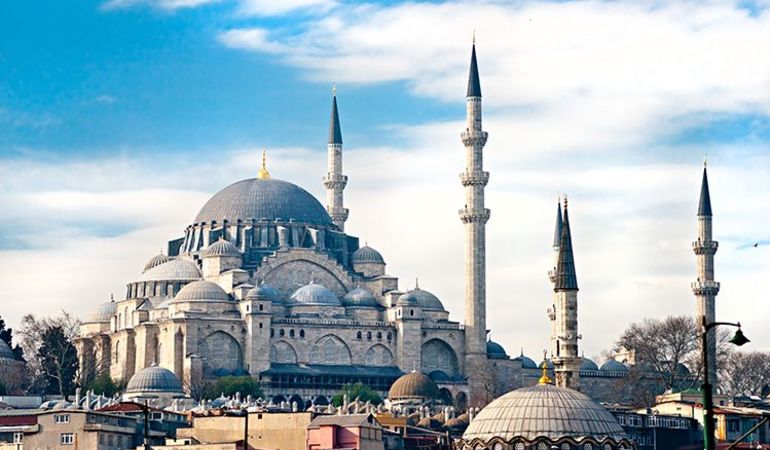
Removed from Unnamed collection
Suleymaniye Mosque 
Süleymaniye Mosque built on top of the third hill of historical Istanbul is one of the biggest mosques of the city.
The truly staggering size of the Süleymaniye Camii (Suleymaniye Mosque) is one of its most distinctive features – built by the legendary architect, Mimar Sinan, it is known as one of his masterpieces, and his largest design. It is not just the awe-inspiring size that is impressive (the central dome stands 47m high), but also the elegantly decorated interior. The sense of space and light is emphasized the supporting semi-domes to the northwest and southeast and the monumental arched spaces to the southwest and northeast. https://istanbultourstudio.com/things-to-do/suleymaniye-mosque
Map
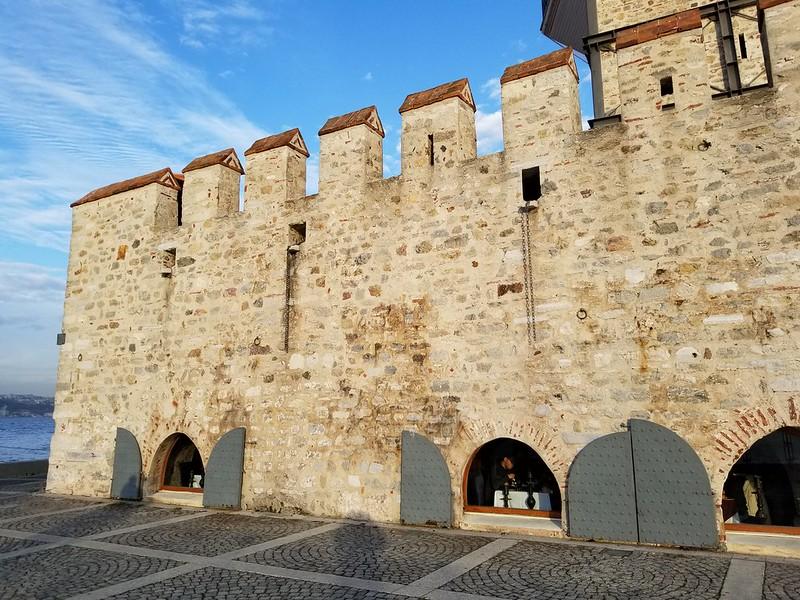
Removed from Unnamed collection
The Maiden Tower 
Nestled off the coast of the charming Salacak neighborhood in Üsküdar, Kizkulesi, or the "Maiden's Tower," stands as a timeless sentinel at the southern entrance of the Bosphorus. The name itself is steeped in legend: it’s said that a Byzantine emperor, haunted by a prophecy that his cherished daughter would meet her end at the age of 18 by a snake, constructed this tower on a rocky outcrop. He believed that isolating her from the mainland would protect her from harm. Yet, fate is a tricky thing; a snake, hidden within a fruit basket brought from the city, fulfilled the prophecy, tragically claiming the princess's life. The history of Kizkulesi stretches back to the 5th century BC. Built by the Athenian general Alcibiades, it originally served as a strategic watchtower to oversee the vital waterway of the Bosphorus. A chain was extended from the land to the tower, transforming it into a checkpoint and customs area for passing ships. This fascinating past adds layers to its allure. Today, Kizkulesi has been reimagined as a classy restaurant and café-bar, offering mouthwatering cuisine paired with breathtaking 360-degree views of the Bosphorus and the historic skyline of Istanbul. The ambiance is especially magical at night when the city lights twinkle like stars. Regular shuttle boats ferry visitors to the tower from Kabataş on the European side and Salacak on the Asian side, making it easily accessible for those seeking a unique dining experience. While you're there, don't miss the chance to explore the nearby Üsküdar district, which is rich with Ottoman-era architecture and bustling local markets. It's the perfect way to round off your visit to this enchanting corner of the world.
Map
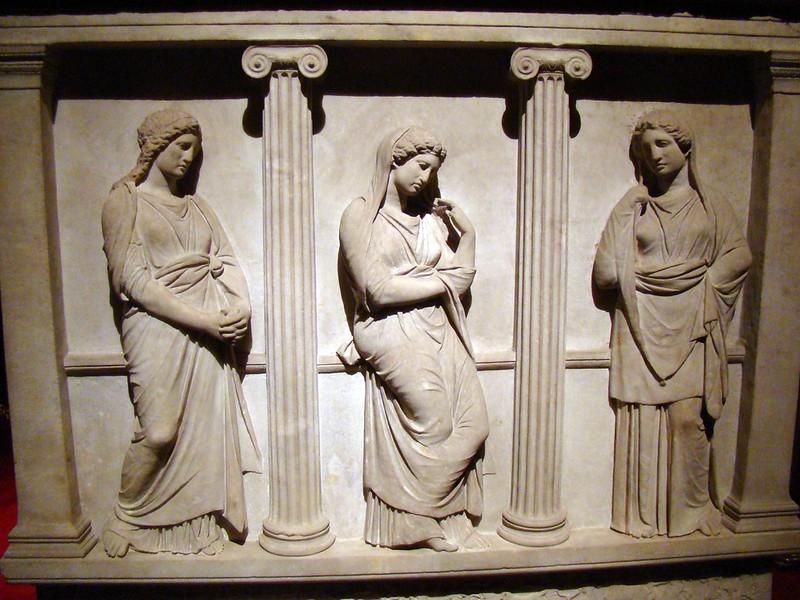
Removed from Unnamed collection
Istanbul Archaeological Museum 
The Istanbul Archaeological Museums stand out as one of the most awe-inspiring historical venues for hosting outdoor events. This remarkable complex is divided into three main sections: the Istanbul Archaeological Museum, the Ancient Orient Museum, and the Tiled Kiosk Museum. Together, they showcase an incredible collection that represents Turkey's first museum, housing over a million artifacts from various cultures that were once part of the imperial territories. The Archaeological Museum, founded on June 13, 1891, was originally named Müze-i Hümayun, or the Imperial Museum. It was commissioned by a talented archaeologist, painter, and curator, whose vision brought this magnificent institution to life. Walking through the museum, you can almost feel the weight of history in the air, as each artifact tells its own story of the past. Nestled in the heart of Istanbul, the museums offer more than just a glimpse into ancient history. The architecture itself is a masterpiece, blending traditional styles with a hint of modernity, making it a feast for the eyes. Whether you're a history buff or simply love exploring new places, the Istanbul Archaeological Museums promise an unforgettable experience that will leave you inspired and enriched.
Map
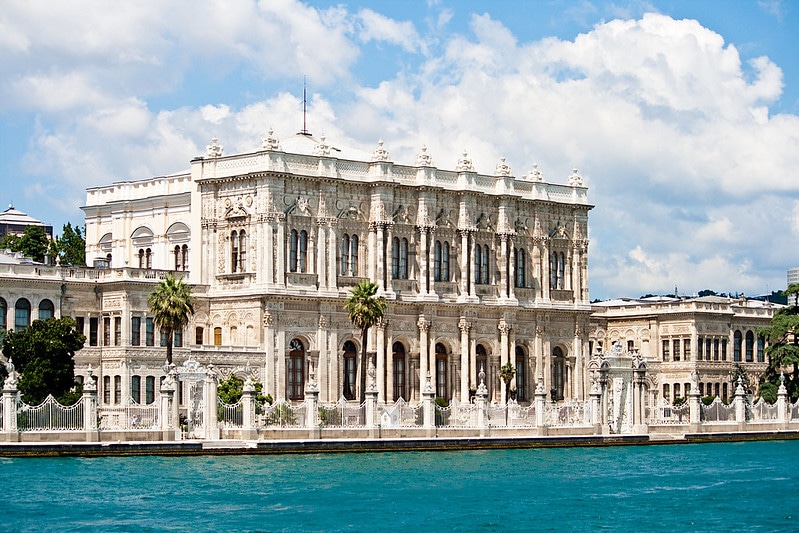
Removed from Unnamed collection
Dolmabahce Palace 
Dolmabahce Palace built in 19 th century is one of the most glamorous palaces in the world. It was the administrative centre of the late Ottoman Empire with the last of Ottoman Sultans was residing there. After the foundation of the Turkish Republic in Ankara, Mustafa Kemal Ataturk transferred all government functions to the youthful capital but on his visits to Istanbul Ataturk occupied only a small room at Dolmabahce Palace as his own. He stayed, welcomed his foreign guests and made a practical centre for national, historical and language congress and for international conferences. http://www.dolmabahcepalace.com/
Map
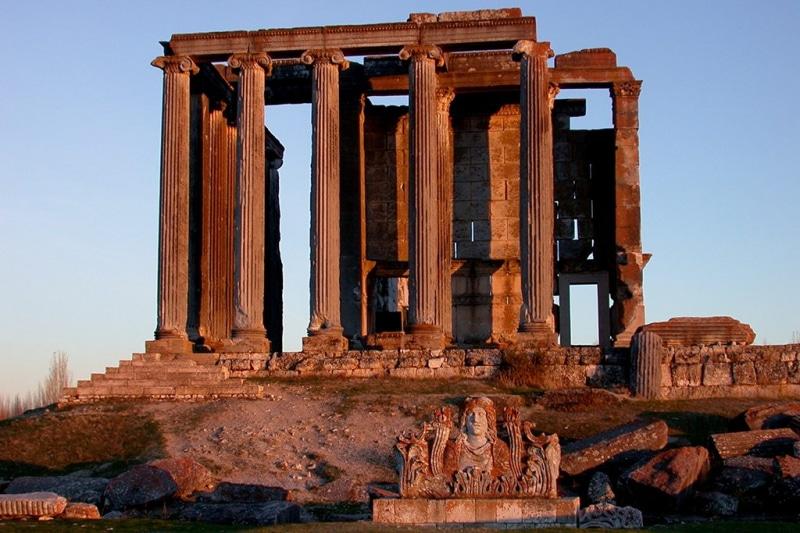
Removed from Unnamed collection
The Ancient Aizonai 
The ancient city is situated southwest of Kütahya,in Çavdarhisar. The settlement dates back to 3000 BC.Aizanoi was settled on the two banks of River Rhyndakos that flowed through the region called ‘Phyrgia Epiktetus’(little Phyrgia)in ancient times. The name Aizanoi comes from the word eksouanous http://kutahyacreativecity.com/museums-and-archeological-sites/
Map
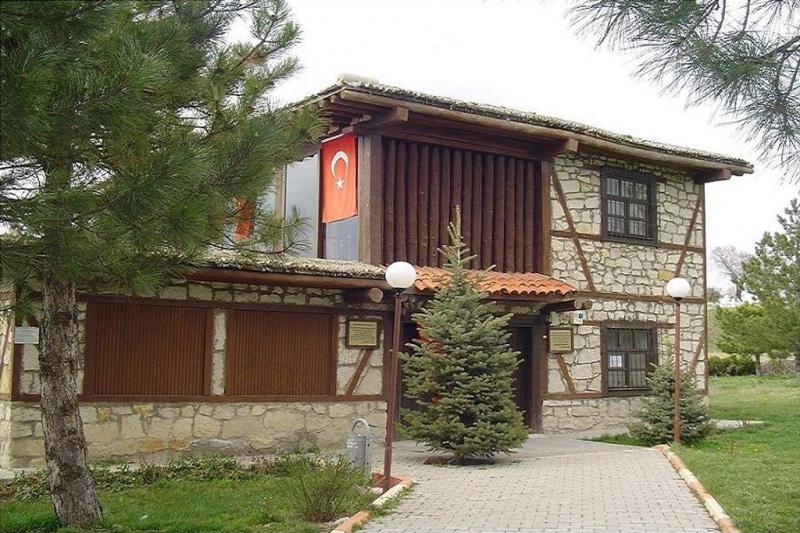
Removed from Unnamed collection
Dumlupinar Atatuerk House Museum 
The site is the house that Head Commander Gazi Mustafa Kemal Atatürk stayed in during the War of Independence, and it was also used as the Dumlupınar HQ. The house has been fully restored to its original state and was opened to visitors on August 30, 2003. http://kutahyacreativecity.com/museums-and-archeological-sites/
Map
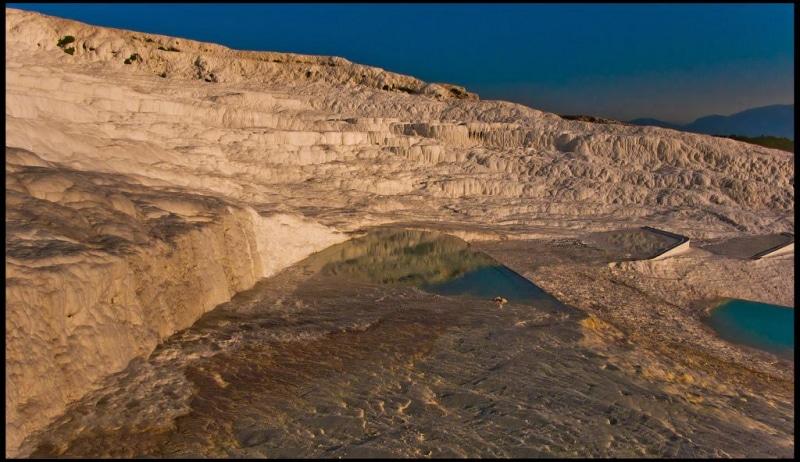
Removed from Unnamed collection
Cotton Castle 
Pamukkale, which translates to "cotton castle" in Turkish, is a breathtaking natural wonder nestled in the heart of Denizli Province in southwestern Turkey. This enchanting site is renowned for its hot springs and stunning travertine terraces, crafted from carbonate minerals deposited by cascading waters. Picture this: gleaming white terraces that resemble fluffy cotton clouds, creating an otherworldly landscape. As you wander through Pamukkale, you'll feel like you've stepped into a dream world. The warm, mineral-rich waters have been attracting visitors for centuries, offering both a relaxing soak and a chance to marvel at nature's artistry. It's not just the visuals that captivate—there's a sense of tranquility in the air, a perfect escape from the hustle and bustle of everyday life. And while you're there, don't miss the nearby ancient city of Hierapolis. This UNESCO World Heritage Site is home to fascinating ruins, including a grand theater and an ancient necropolis. It's a perfect blend of history and nature, where you can let your imagination roam through the echoes of the past.
Map

Removed from Unnamed collection
Pamukkale Hot Springs 
Pamukkale is an incredible showcase of natural hot water pools nestled in Denizli Province in southwestern Turkey. Imagine stepping into a surreal landscape where dazzling white terraces, known as travertines, cascade down the hillside. These stunning formations result from carbonate minerals left behind by flowing thermal waters, creating an otherworldly spectacle that looks like it’s been sculpted by artists. This UNESCO World Heritage Site is not just a feast for the eyes. The thermal waters are believed to have healing properties, drawing visitors from all over the globe. Strolling barefoot on these terraces, you'll feel as if you're walking on clouds. The experience is both soothing and exhilarating, offering a unique connection to nature's artistry. Beyond the terraces, the ancient city of Hierapolis adds a historical dimension to your visit. Explore the ruins of this once-thriving city, including a grand theater and ancient baths, and let your imagination wander through the echoes of history. Whether you're soaking in the warm waters or exploring ancient relics, Pamukkale offers a blend of relaxation and adventure that's hard to resist.
Map

Removed from Unnamed collection
Hierapolis 
Hierapolis, a city steeped in history, was founded by King Eumenes II. It received its name, "Hiera," to honor the wife of Telephos, the legendary founder of ancient Pergamum. Nestled in what is now modern-day Turkey, Hierapolis is a fascinating blend of ancient ruins and natural wonders. The area is renowned for its stunning white travertine terraces, created by mineral-rich thermal waters that cascade down the hillside. Visitors can explore the ancient theater, which offers breathtaking views of the surrounding landscape, and wander through the remnants of the city's streets and temples. It's a place where the past and present coexist, offering a unique glimpse into the lives of those who walked these paths centuries ago.
Map
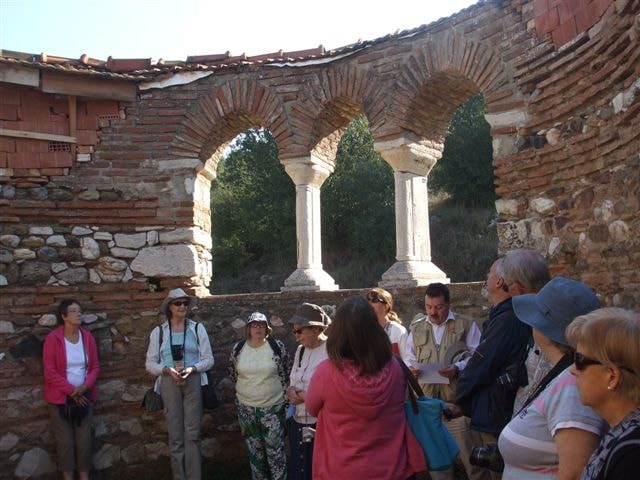
Removed from Unnamed collection
Church of Saint Polycarp 
St. Polycarp Church stands as the oldest structure in İzmir, nestled in the heart of the Konak District. This historical gem can be found on the Mediterranean side, bordered by Kazim Dirik Caddesi, Necatibey Boulevard, and Gazi Osman Money Boulevard. Walking through its doors is like stepping back in time, where you can almost feel the whispers of centuries gone by. The church is a serene escape from the hustle and bustle of city life, offering a quiet space for reflection and awe. Its architectural beauty is a testament to the rich history and cultural heritage of İzmir. If you're visiting, take a moment to appreciate the intricate details and craftsmanship that have withstood the test of time.
Map
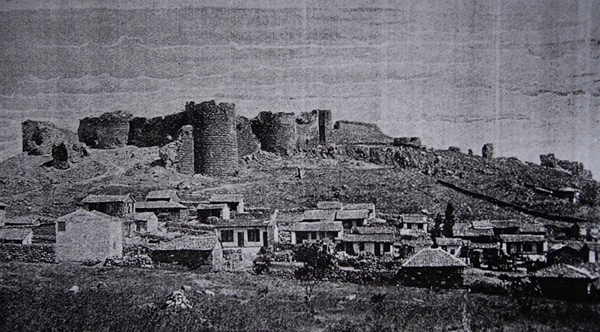
Removed from Unnamed collection
Kadifekale 
The city, with its roots stretching back to the 4th century BC, is a treasure trove of history. You'll find traces of Hellenistic, Roman, Byzantine, and Ottoman influences woven into its very fabric. Perched on a hill 186 meters above the city lies Kadifekale, offering a breathtaking view of the surroundings. This ancient site, once known as "Pagos," is steeped in legend. It's said that the fierce Amazon women once lived here, descending from the mountain's foothills to assert their power for many years. Kadifekale isn't just about the past, though. Today, it's a popular spot for both locals and visitors who come to enjoy its panoramic views and the sense of stepping back in time. The area is perfect for a leisurely stroll, where you can almost feel the whispers of history in the breeze. Plus, the nearby markets and cafes provide a delightful taste of modern Turkish culture, making it a must-visit for any traveler exploring the region.
Map

Removed from Unnamed collection
Duatepe Monument 
The Duatepe Monument was built by afforestation of Gazi Tepe, Türbe Tepe and Mangal Mountain on the last line of defence where Sakarya Square War, which is considered the turning point of the War of Independence, was held. Work started in Duatepe in October 1999 and 20 thousand trees were planted and the monument was completed and opened on 12 September 2000. Polatlı, Duatepe Monument consists of five parts: parking lot, connection road, walkway, ceremony area and monument. There is information written in brass letters of 81 martyrs in Duaepe on the walls of the monument. The creator of the monument and sculptures is the State Artist sculptor Metin Yurdanur.
The monument symbolically tells the story of the Anatolian people running to victory and civilization like an enthusiastic river under the leadership of Mustafa Kemal Atatürk. The figure of Mustafa Kemal on his prancing horse expresses the pride and happiness he has become the leader of the Turkish Nation. The sculptures of Atatürk, İnönü and Marshal Fevzi Çakmak, which are in the background, describe the command unit and the statue of Halide Edip Adıvar describes the contribution of the Turkish woman to the War of Independence. The scene where Atatürk and his child watch the plain through binoculars expresses the Turkish nation, which is waiting for the victory to be won a little later and the next independence. https://www.kulturportali.gov.tr/turkiye/ankara/gezilecekyer/duatepe-aniti
Map
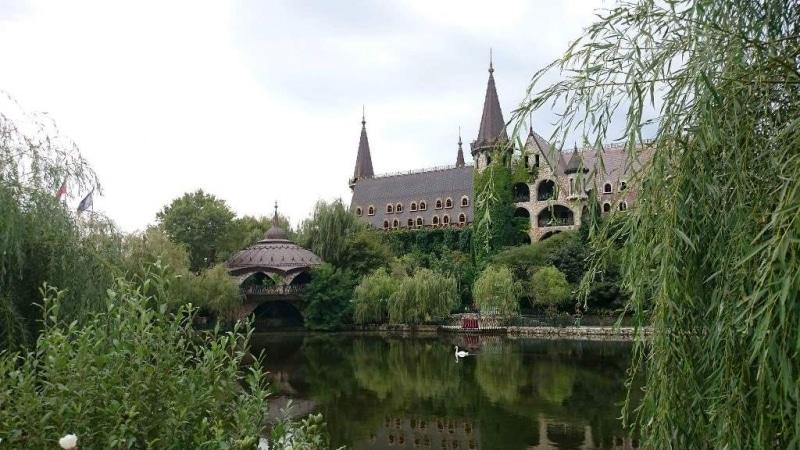
Removed from Unnamed collection
The Castle of Ravadinovo 
From the first glance, the Castle is made in the style of the classic Western European castles combining various styles from the Renaissance and Romantic periods – but this comes not to be true! The style of the Castle is one and only – the unique Fairy style. This is the secret of its magic impact – the dream that came true to make a castle existing only in fairy-tales. https://www.gotoburgas.com/en/places-to-go/view/507
Map
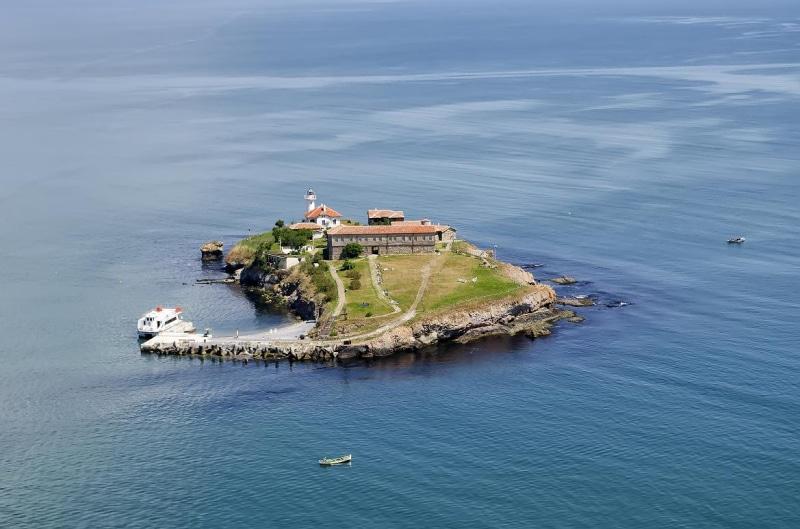
Removed from Unnamed collection
St. Anastasia Island 
St. Anastasia Island is located in the Burgas Bay in the Black Sea. It is a volcanic rock island, 12 meters high, at some places up to 17 meters high, and its area is almost 9 decres. Between 1959 and 1990 it was known as Bolshevik Island. It is surrounded by mystery and there are hundreds of legends and stories about it.
A healing place, offering wonder-working herbs and potions from old recipes, medieval monastery cell, where you can stay overnight, restaurant with authentic Burgas meals from old recipes… all this in the most romantic place in the Burgas Bay – St. Anastasia Island. You can get there on a boat, leaving from the Sea station Burgas.
Until recently, this sounded like a fairy tale, but for several years it is s part of Burgas’ reality, thanks to the project, won by Municipality Burgas – “Cultural-historical heritage on St. Anastasia Island” and “Burgas – an attractive and competitive tourist destination”, financed by the Operative Programme “Regional Development” https://www.gotoburgas.com/en/places-to-go/view/23
Map
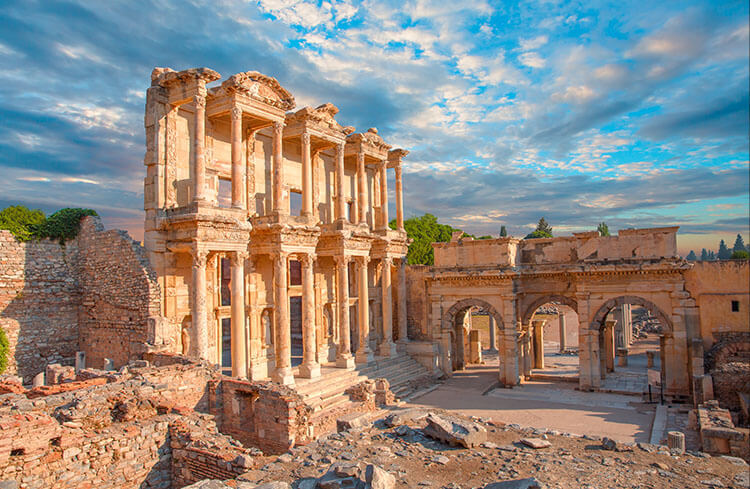
Removed from Unnamed collection
Ephesus 
The ancient city of Ephesus in Turkey is an absolute treasure trove of history. Known as one of the best-preserved ancient cities, it invites you to wander through time itself. Imagine strolling along its timeworn streets, where temples, theatres, libraries, and statues whisper stories of the past. The grand Library of Celsus stands proudly, a testament to the city's rich cultural heritage. Don’t miss the awe-inspiring theatre, the remarkable Temple of Hadrian, and the opulent Temple of Artemis, celebrated as one of the Seven Wonders of the Ancient World. It's fascinating to think that among these grand structures, you'll also find remnants of everyday life, like public toilets and even a brothel, dating back to the fourth century BC. For those interested in faith tourism, Ephesus holds a special place. The House of the Virgin Mary is a serene spot believed to be where Mary spent her final years, brought there by St. John, living until the ripe old age of 101. The Church of the Virgin Mary, near the ancient harbor, hosted the Third Ecumenical Council in 431. If you're exploring religious sites, the Basilica of St. John and İsa Bey Mosque, showcasing stunning Seljuk architecture, are must-sees. But Ephesus isn't just about ancient ruins. It's alive with culture today, hosting the International İzmir Festival. This event brings music and art to venues like the grand amphitheatre, Celsus Library, and the House of the Virgin Mary, blending past and present in a vibrant celebration. And here's a little tip: visiting during the festival adds a magical layer to your experience. The atmosphere is electric, with performances that echo through these ancient stones, creating a unique and unforgettable vibe. Whether you're a history buff or just someone who loves a good adventure, Ephesus offers something truly special.
Map

Removed from Unnamed collection
Isparta Museum 
A must in Isparta is the Isparta museum. Here you can see excavations from the Persian, Ottoman and Roman times. The museum has four halls: archeology, excavations, ethnography and carpets. https://www.nederlandersinturkije.nl/bezienswaardigheden/isparta-muzesi-museum/
Map

Removed from Unnamed collection
Isparta mosque 
Isparta historical State han mosque is well known tourist attraction. https://www.mumsema.org/camiler-ve-mescit-resimleri/281985-isparta-camileri.html
Map

Removed from Unnamed collection
Aquae Calidae 
The place brings together the rich history, and attracts its visitors with many different possibilities for relaxation and entertainment. The archaeological values found on that place such as the fortress walls of the ancient city of Terme (Thermopolis), the Roman baths of the 1st century AD with a warm and cold swimming pool, and various medieval rooms are accessible to tourists through the modern footbridges that facilitate their passage and viewing.
The complex allows citizens and guests of Burgas to visit the fully renovated bathroom of Suleiman the Magnificent. Upon restoration, the original vision is strictly adhered, lined with marble and typical oriental ceramics. The authenticity is complemented by natural and artistic lightning that performs the act of a functioning museum where visitors can watch a movie based on 3D mapping. It leads the tourists to a virtual walk from the Thracian times and the Sacred Spring of the Three nymphs-healers through the Roman period, the Crusades – until the time of Suleiman the Magnificent. https://www.gotoburgas.com/en/places-to-go/view/496
Map

Removed from Unnamed collection
Sagalassos Ancient City (Burdur) 
The ancient city of Sagalassos is located in the region known as Pisidia in antiquity. Situated at the edge of a mountainous area, the first settlement traces date back to 12,000 years ago. The ancient city of Sagalassos is extremely well preserved with its monumental structures where almost all of the original building stones can be found. http://www.kulturvarliklari.gov.tr/TR,44412/sagalassos-antik-kenti-burdur.html
Map
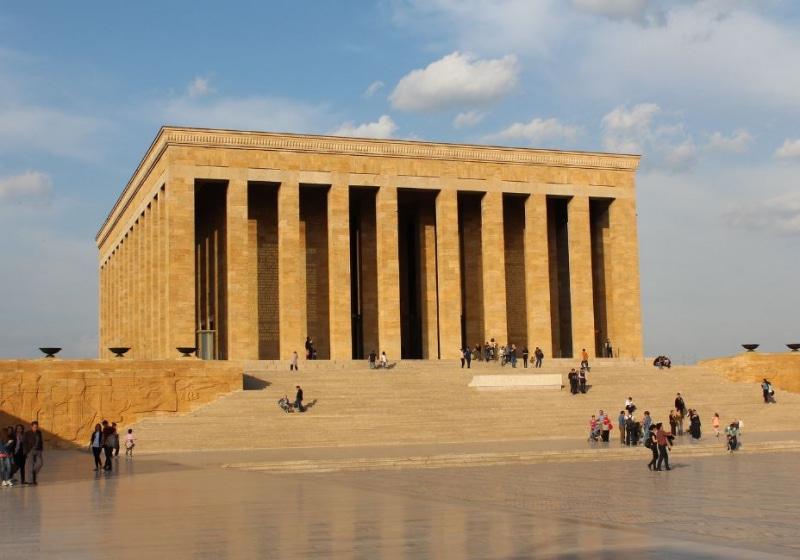
Removed from Unnamed collection
Anitkabir 
Before building of Anitkabir, Anittepe’s (Monument Hill ) name was Rasattepe (Observation Hill) because there was an observatory on this hill.
There were also tumultuous (graves) belonging to Phrygian civilization of 3rd Century BC on this hill. Archaeological excavations took place to remove these tombs after the decision was given to build Anitkabir on Rasattepe. Remains found on these excavations are on display in the museum of Anatolian Civilizations.
The first stage to start the construction was the expropriation of the land after deciding on the Anitkabir project. Actual construction of Anitkabir commenced on 9 October 1944 with a splendid ceremony by laying the first stone of the foundation. Construction of Anitkabir took nine years in four stages. Second stage construction, comprising the mausoleum and the auxiliary buildings surrounding the ceremonial ground, started on 29 September 1945 and completed on 8 August 1950.
The third stage was comprising the construction of the roads leading to the mausoleum, Lions’ alley, ceremonial ground, the mausoleum’s upper-level stone pavement, grand stairs, putting the big tomb stone in its place and installation of electricity, plumbing and heating systems. https://www.ktb.gov.tr/EN-103960/ankara---anitkabir-ataturks-mausoleum.html
Map
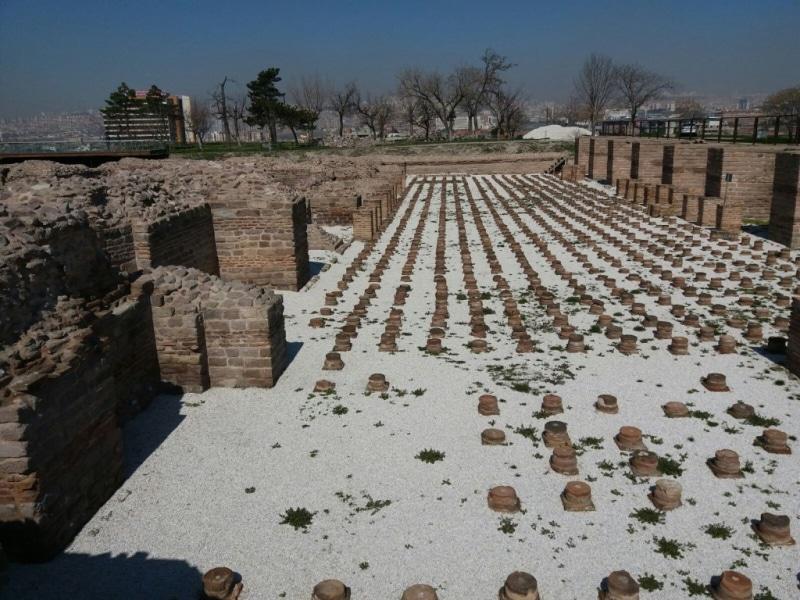
Removed from Unnamed collection
Roman Baths 
The Roman Bath ruins, just a short 400-meter stroll from Ulus along Çankırı Avenue, are a fascinating piece of history waiting to be explored. These ancient relics were fully unearthed between 1939 and 1943, and by the early 2000s, they had been transformed into what we now enjoy as the Open Air Museum. This place is steeped in history, having been constructed during the reign of Roman Emperor Caracalla between 212 and 217 AD. Interestingly, the site reveals layers of settlement from various eras: Phrygian, Roman, Byzantine, Seljuk, and Ottoman. The complex is divided into two main sections: the Pillared Road and the Hamam Building. Walking through these areas, you can't help but imagine the bustling activity of ancient times. The architecture of the Roman Bath is a testament to the engineering prowess of the Romans, with intricate designs that have withstood the test of time. For those interested in archaeology or history, this site offers a tangible connection to the past. It's not just about the ruins themselves, but the stories they tell about the people who once walked these grounds. If you're planning a visit, consider timing it with one of the guided tours offered, as the insights from knowledgeable guides can truly enrich your experience.
Map
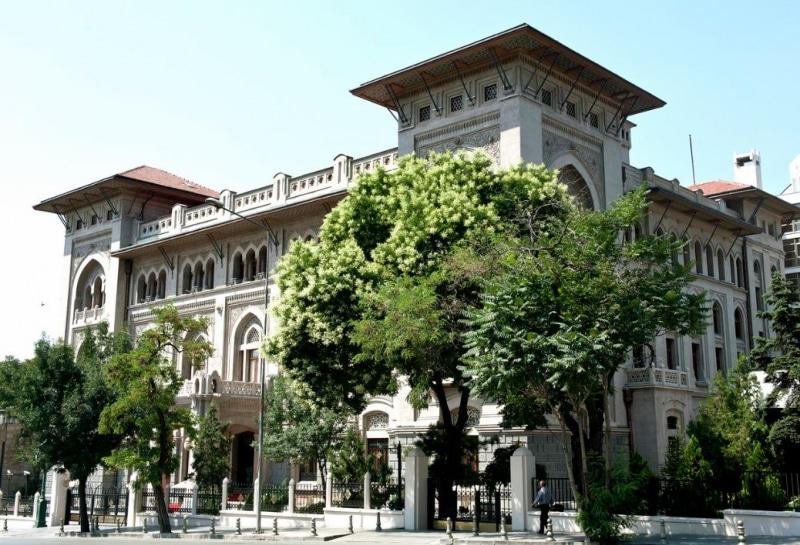
Removed from Unnamed collection
Ziraat Bank Museum 
Ziraat Bank Museum is located in the Honor Hall of the Ziraat Bank Head Office Building, which was built by the Italian architect Giulio Mongeri between 1926-1929 and is one of the structures of the First National Architecture Period. It was opened on November 20, 1981, when the 118th anniversary of the bank was celebrated, by the Advisory Council President Şadi Irmak.
It is the first bank museum in our country. Since its start, Turkey commercial banking system, economic, political, cultural, artistic and showing growth reached up to the present with educational exchange Ziraat Bank Museum, many antique objects used in hosting and banking systems of these properties are exhibited in a historical atmosphere. https://www.kulturportali.gov.tr/turkiye/ankara/gezilecekyer/tc-zraat-bankasi-muzes
Map
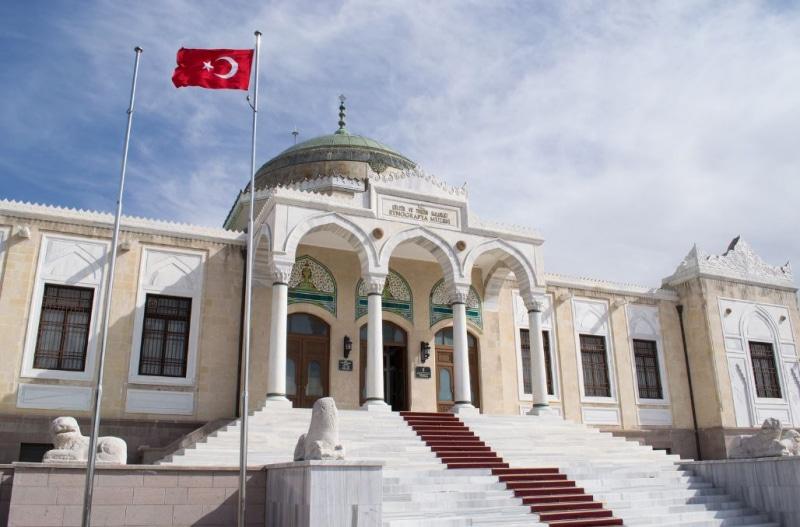
Removed from Unnamed collection
Ethnography Museum of Ankara 
Ethnography Museum of Ankara is the first museum of Turkish Rebuplic which was planned and built by the directive of Atatürk, the great leader. Arif Hikmet Koyunoğlu, the architect of the building, is one of the most valuable architects of the Republican period. The architecture of the Ethnography Museum of Ankara reflects the characteristics of each period of Anatolia from the early ages to the Republic. The Museum which was opened to the public on 18th July 1930 and remained open until the date on November 1938 where the inner courtyard of the museum served as the temporary grave for Atatürk. The Ethnographic Museum of Ankara reopened its doors to the public, owing to the International Museums week, in 6th-14th October 1956.
Ethnography Museum of Ankara contains a rich collection of works which reflect ethnographic aspects of all people lived in Anatolia At the museum, it is possible to see folk costumes, ornaments, Turkish-specific technical materials compiled from various regions of Anatolia as well as the finest examples of Ottoman calligraphic art, Turkish tile and glass art, metalworking art and wooden artefacts. Also exhibited at the Ethnography Museum is a collection of carpets and kilims from the famous carpet weaving centres of Uşak, Bergama, Kula, Milas, Ladik, Karaman, Niğde, and Kırşehir. The museum also has a specialized library on Anatolian ethnography and folklore, containing artefacts available related to the history of art. http://cagdasmuzebilim.ankara.edu.tr/en/ethnography-museum-of-ankara/
Map
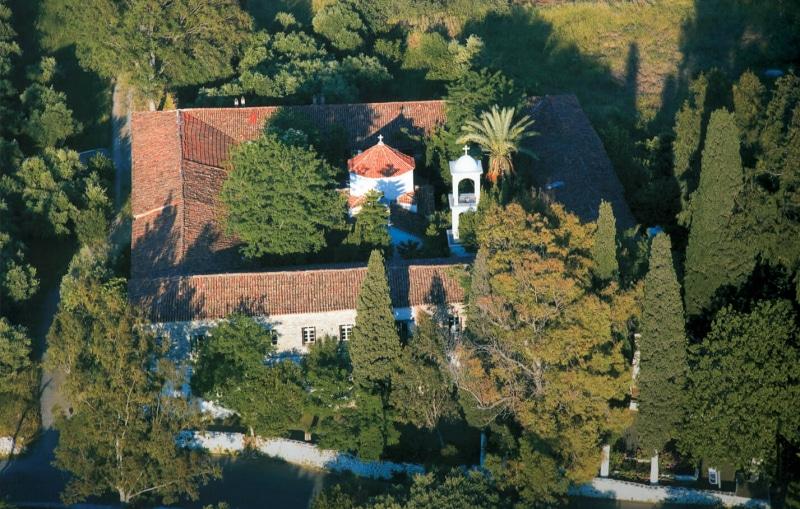
Removed from Unnamed collection
Monastery of Agia Zoni 
Nestled in the lush valley of Vlamari, just about 2 kilometers from the charming town of Samos, you'll discover the serene monastery of Agia Zoni, also known as the Cincture of Virgin Mary. This historic gem was constructed in 1695, and stepping inside feels like a journey back in time. The walls are adorned with stunning frescoes that have been lovingly preserved since the 17th century, offering a glimpse into the artistry of ages past. But that’s not all: the monastery houses an extraordinary library filled with patriarchal documents and treasures that whisper stories of the past. It's a place where history feels alive, and every corner seems to tell a tale. While you're there, take a moment to soak in the peaceful atmosphere. The surrounding landscape is a treat for the senses, with rolling hills and vibrant greenery. It's a perfect spot for reflection or simply enjoying the beauty of nature. If you're lucky, you might even catch the gentle ringing of the monastery's bells, which adds an extra layer of tranquility to the experience.
Map
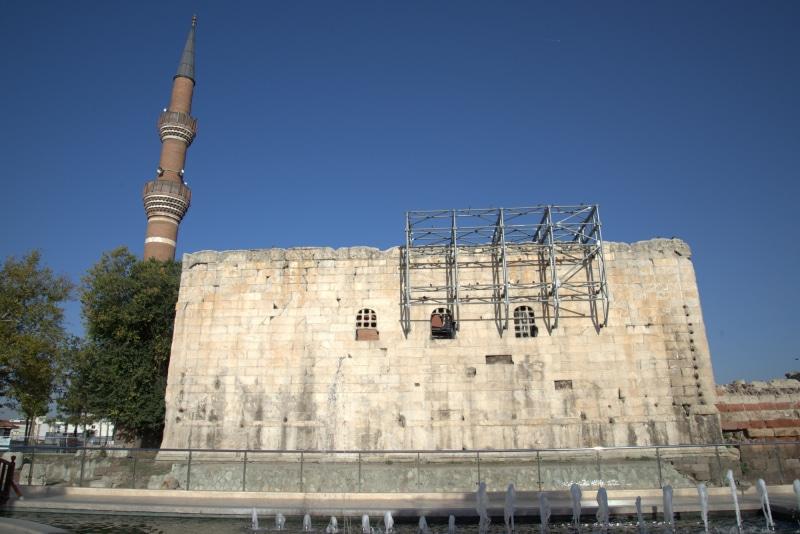
Removed from Unnamed collection
Temple of Augustus Ankara 
The Temple of Augustus and Roma in Ankara is a fascinating relic from the ancient world. It was constructed after the Roman Emperor Octavian Augustus conquered Central Anatolia in 25 BCE. Back then, the city was known as Ancyra, and it became the capital of the newly established Province of Galatia. After Augustus passed away in 14 CE, a copy of his autobiography, "Deeds of the Divine Augustus," was inscribed on the temple walls in both Latin and Greek. While many such copies existed throughout the Roman Empire, the version found in Ankara, called the Monumentum Ancyranum, is one of the most well-preserved. This makes it an invaluable resource for historians studying that era. In the early 3rd century BCE, the Celtic people from Northern Europe made their way to the Anatolian highlands. Their journey took them through Macedonia and Greece, where the Greeks began referring to them as the Galatians. Interestingly, they didn't arrive in Asia Minor as invaders. Instead, they were invited by King Nikomedes I of Bithynia, who sought their help in his conflict against his brother, Zipoetes II. Today, Ankara is a bustling city where the ancient and modern worlds coexist. Visitors can explore the remnants of the temple and imagine the stories these stones could tell. It's a place where history feels alive, offering a unique window into the past while you stand amidst the hustle and bustle of contemporary life.
Map
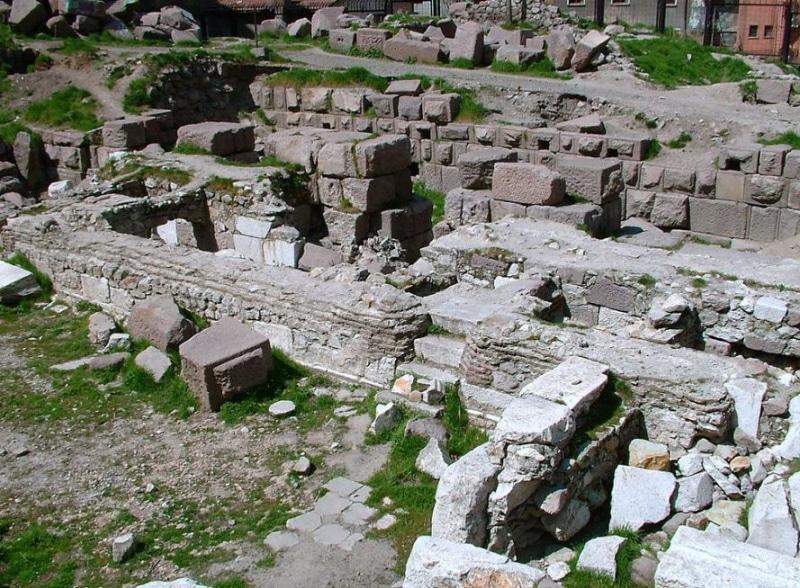
Removed from Unnamed collection
Ancient Theatre of Ankara 
The theatre was built on a semicircular plan, and the hillside of the citadel supported its audience. Two vaulted passages still lead to the orchestra, a semicircular space occupied by the choir during the performances. In the case of the theatre in Ankara, it has a diameter of about 13 meters and is surrounded by a thick wall. Unfortunately, it is not known what material was used for the floor of the orchestra.
A proscenium, i.e. the platform where the actors performed, has also been preserved. Only the northern part of skene, the structure at the back of a theatre stage housing changing rooms and warehouses of props, has survived in Ankara. The choir used the passages called parodoi, of which the eastern one survived to our times in its entirety, and the western one - only in fragments.
The seats in the theatre and radially ascending stairs were made of stones, debris, and plaster. The auditorium was divided into four horizontal sections. It is estimated that the theatre had from 20 to 22 rows of seats and it could accommodate between three and five thousand spectators. Therefore, it is a relatively small example of such a building in Asia Minor. The seats from the audience were later used to build the walls of the citadel, although archaeologists managed to excavate two of them in their original location. They were made of andesite, and their height was about 40 cm. https://turkisharchaeonews.net/object/ancient-theatre-ankara
Map
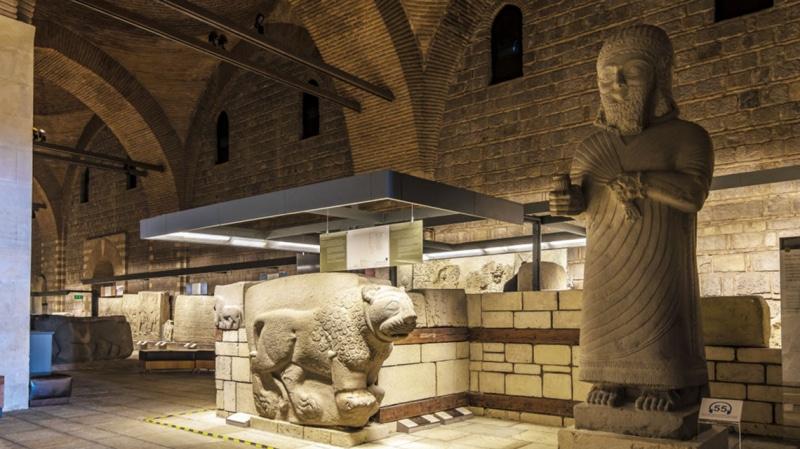
Removed from Unnamed collection
Museum of Anatolian Civilizations 
The Museum of Anatolian Civilizations, located in Ankara province of Turkey, is just like a gift for history lovers. This superb museum is the perfect introduction to the complex weave of Turkey's ancient past, with its beautiful artefacts picked from just the significant archaeological site in Anatolia.
Very few places in the world could give you a chronological understanding of mankind's mind-boggling progress. Anatolian Civilizations Museum in Ankara is one of them. Arranged as a chronological spiral, this museum will take you on a journey from 900 thousand years ago, to the present time.
The Museum of Anatolian Civilizations has on display priceless artefacts dating from the Paleolithic and Neolithic Ages and from Hittite, Phrygian, Urartu and Roman civilizations. https://www.goturkeytourism.com/things-to-do/anatolian-civilizations-museum-ankara.html
Map


